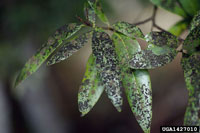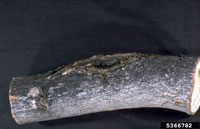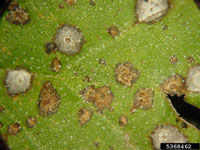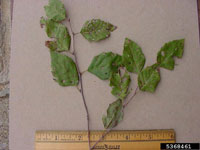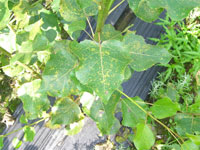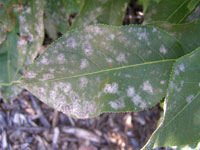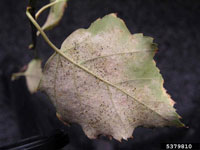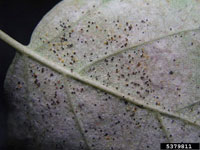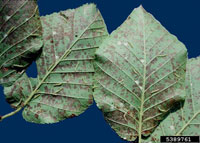Extension > Garden > Diagnose a problem > What's wrong with my plant? > Deciduous Trees > Birch > Spots or blotches on leaves
Birch > Leaves > Spots or blotches on leaves
1 of 7
Birch erineum or velvet gall
- Patches of reddish fuzz appearing on leaf surface
- Caused by eriophyid mites which are microscopic
- First formed in spring shortly after leaves expand
- More information on Birch velvet galls
2 of 7
Birch leafminer
Fenusa pusilla
- Feed inside newly developing leaves forming opaque to light green kidney-shaped discolorations
- Smaller mines may coalesce into larger mines
- Insects and/or black frass visible inside leaves if held up to light
- Mines eventually turn brown
- Damaged leaves evenly distributed throughout tree
- Larvae are yellowish white, legless, and up to ¼ inch long
- Preferred hosts are paper birch and gray birch
- More information on Birch leafminer
3 of 7
Sooty mold
- Black, brown, or gray soot-like covering on leaf surfaces, or twigs
- Sticky, shiny secretions on leaves from sap-sucking insects (aphids, leaf hoppers, psyllids, etc.)
- Insects or signs of insect damage (distorted, pin-prick feeding marks, etc.) may be seen on leaves above the worst affected moldy areas
- More information on Sooty mold
4 of 7
Birch anthracnose or leaf spot
Cryptocline betularum, Discula betulina and others
- Leaf spots may be 1/8th to 3/8th inch brown spots to large brown blotches surrounded by yellow tissue (C. betularum)
- Leaf spots may be 1/8th inch wide brown rings with a light center surrounded by yellow tissue (D. betulina)
- Infected leaves fall from tree even if still partly green
- Leaves on lower branches most affected
- Common in years with wet rainy spring weather
- More information on Birch anthracnose
5 of 7
Birch rust
Melampsoridium betulinum
- Angular yellow leaf spots turn brown in the center with age
- Raised yellow to orange pustules form on the lower surface of leaf spots midsummer and may release powdery orange spores
- Severe infection can cause leaves to turn brown and fall off prematurely
- Occurs in cool, damp weather
- More information on Birch rust
6 of 7
Powdery mildew
Phyllactinia guttata
- White or gray powdery mats, resembling talcum powder, occur
in spots, blotches or coat leaves - Leaves may become deformed and turn yellow and die in
severe infestations - Common on lower leaves or leaves that are shaded
- Commonly seen in spring or fall
- More information on Powdery mildew
7 of 7
Birch skeletonizer
Bucculatrix canadensisella
- Feeds on underside of leaf between the veins, giving the leaf
a lacelike appearance - Leaves brown in late summer and can fall prematurely
- Caterpillars are approximately ¼" long; whitish to yellowish
in color - Damage occurs when larvae are active in mid-summer
- Preferred hosts are paper birch
- More information on Birch skeletonizer







